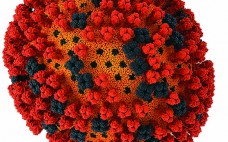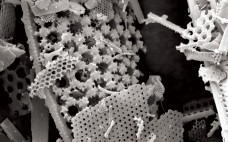Over the past several decades, biologics such as monoclonal antibodies (MAbs) and recombinant proteins have provided therapeutic benefits and efficacy for the treatment of human disease. Completion of the human genome project (launched in 1990) produced a draft of the genome in 2001. A full sequence was published on the 50th anniversary (2003) of the initial publication of Watson and Crick’s papers on the double-helical structure of DNA (1). That large volume of genetic information has been translated into usable…
Downstream Processing
Advances in Chromatography Automation
Not long ago, chromatography automation meant strip recorders and peristaltic pumps. Today, few people would consider that to be true automation, and even fewer would settle for binders full of strip-recorder paper reels. Automation is becoming intelligent and in the process is making our workflows smarter. But how close is automation to being as smart as an experienced scientist? Bio-Rad Laboratories spoke with academics, biotechnology R&D scientists, and industrial process engineers about the evolution of chromatography automation — where it…
Upstream Efficiencies, Economic Forces, and Changing Technologies Complicate Separation and Purification
When it comes to biotherapeutics manufacturing, downstream processing groups tend to get “dumped on.” Advances in cell lines, bioreactors, and culture media formulations have increased production output, providing both higher expression titers and greater volumes, but the filters and chromatography columns on the downstream side haven’t kept pace. These century-old technologies haven’t evolved as much and are reaching their limits. Regulatory agencies have contributed to innovation stagnation because they are cautious about manufacturing process changes for fear of undermining quality…
Evolving Clarification Strategies to Meet New Challenges
Increasingly efficient bioreactors allow biopharmaceutical manufacturers to achieve higher cell densities. That improved upstream efficiency has led to new purification challenges resulting from high product and contaminant concentrations as well as complex components. Therefore, harvest and clarification techniques are evolving to incorporate feed pretreatment, flocculation, and different filtration technologies such as normal-flow, tangential-flow, and depth filtration. The objective is to increase process capacities and filtrate quality, ultimately reducing biomanufacturing costs. New strategies for clarification of recombinant proteins (in particular, monoclonal…
Cost Estimation for Protein A Chromatography: An In Silico Approach to MAb Purification Strategy
Monoclonal antibody (MAb) production has adopted an accepted technology platform for downstream processing (1). The need for more economic processes has been addressed by increasing MAb titers in fermentation and aiming toward greater bioreactor volumes to increase productivity. Consequently, cost pressures are now passed on to downstream process groups. Membrane and chromatography resin savings are more important for MAb processes than ever before, with highly productive cell cultures generating large volumes of process fluid to purify (2). Traditionally, protein A…
BPI Revisited: Improving IEX Throughput and Performance with Differentiated Chromatography Sorbents
This podcast features: René Gantier He discusses the changes in the industry since his May 2010 article Improving IEX Throughput and Performance with Differentiated Chromatography Sorbents was published.
Diatomaceous Earth Filtration: Innovative Single-Use Concepts for Clarification of High-Density Mammalian Cell Cultures
In the past decade, biopharmaceutical manufacturers have demonstrated major improvements in monoclonal antibody (MAb) production, exhibiting product titers frequently in the range of 5–10 g/L using standard fed-batch mammalian cell cultures (1, 2). Increased product yields allow for smaller-scale production vessels. With 2,000-L single-use bioreactors already commercially available, single-use manufacturing of biomolecules becomes more and more an option. Other recent developments in the biopharmaceutical industry — e.g., drugs for smaller indications and more potent drugs allowing for lower dosages —…
Dual-Chamber Syringes vs. Vials
Is there a clear choice between dual-chamber syringes and vials in today’s competitive drug development market? That’s the topic of this recorded webcast. During the webcast, the speakers address the following questions: What are the causative factors that have resulted in the rapid increase in prefilled syringes over the last several years? Do dual-chamber syringes offer distinct advantages over vials in drug development? How can dual-chamber technology help differentiate products in a highly competitive environment? What are the main differences…
Clinical Syringe Development: An Innovative Approach to Gain an Early Advantage
Do ever-rising drug development costs, highly competitive markets, and increasing regulatory demands sound familiar? This webcast addresses the benefits of starting syringe work earlier in the development process of injectables. This webcast will: Provide an overview of the many development challenges faced by pharmaceutical and biotechnology companies Discuss the benefits of clinical syringe development including time savings and package attractiveness Offer a case study with a live question and answer session Feature thought leaders Dr. David Brett and Dr. Sabine…
Evaluation of HCP and DNA Clearance with NatriFlo™ HD-Q Membrane Adsorbers at Lab to Process Scales
NatriFlo™ HD-Q chromatography from Natrix Separations introduces reliable and reproducible Q polish performance that combines resin binding capacity with adsorber speed to achieve a new level of process flexibility. Gallus Biopharmaceuticals (a St. Louis based CMO) evaluated NatriFlo™ HD-Q membrane columns as an anion exchange polishing step with the objective of assessing NatriFlo’s ability to (1) reduce process-derived impurities to achieve target product profile; (2) maintain process robustness to process changes; and (3) achieve reliable scalability from lab to production.…








